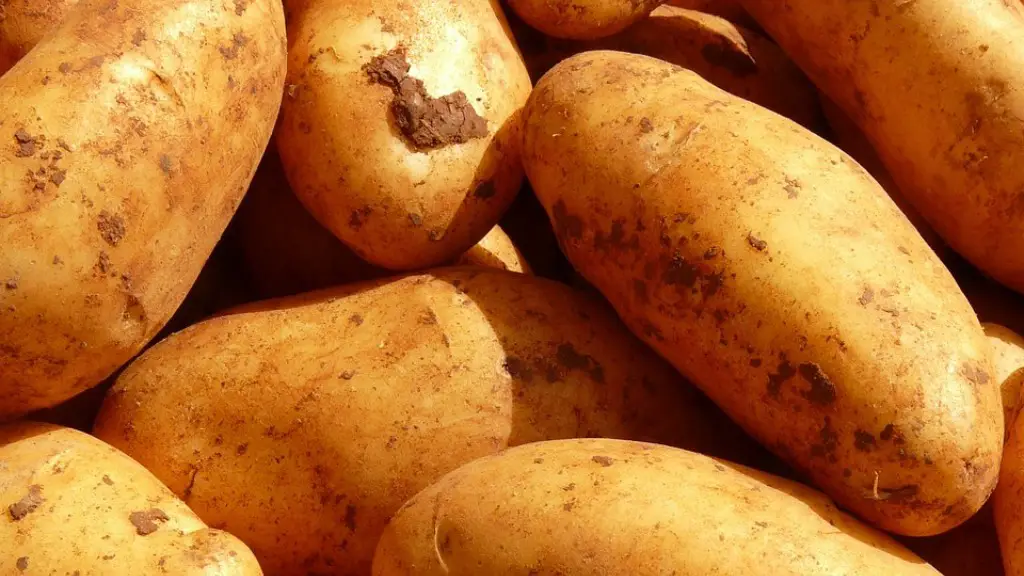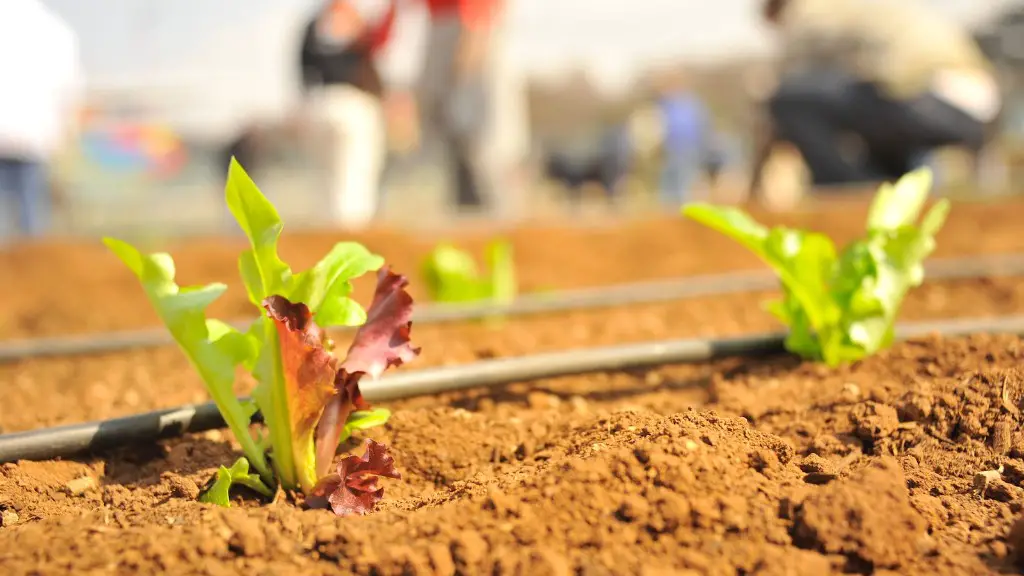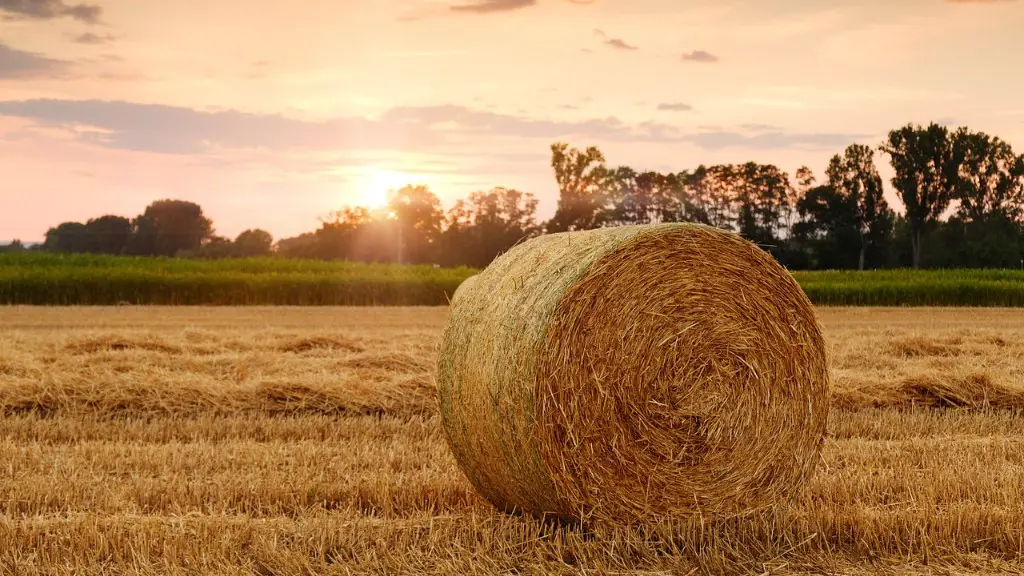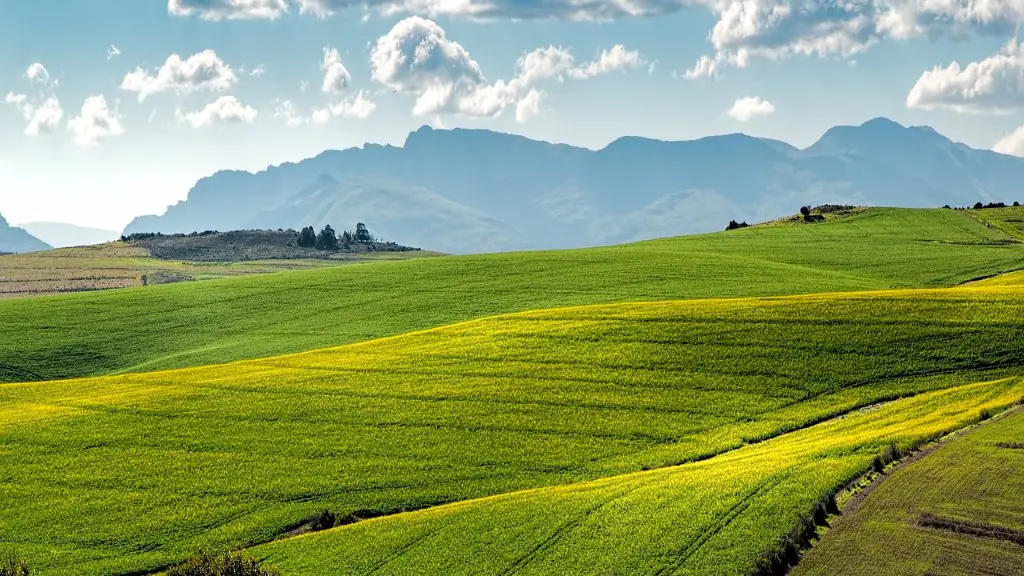Agriculture is an important industry in California, and it has been responsible for the state’s robust economy and diverse food offerings. California produces nearly one-third of the country’s vegetables, two-thirds of its fruits and nuts, and almost all of its wine. This vast production of agricultural goods makes it the leading state for crop value in the United States. California’s agricultural industry is also notable for its adaptation of modern technology, including the use of drones, artificial intelligence, and precision agriculture.
California is one of the most diverse agricultural states in the nation. Its mild climate and large acreage provide ideal conditions for the agriculture industry. As a result, California produces a variety of commodities, including fruits and nuts, vegetables, beef and dairy, poultry and eggs, and wine. California is the number one producer of strawberries, almonds, and raisins. Other popular crops include tomatoes, garlic, peppers, celery, lettuce, melons, and oranges. California also produces a variety of wine grapes, including Cabernet Sauvignon, Merlot, Chardonnay, and Pinot Noir.
In addition to its production of a variety of crops, California is known for its innovative agricultural technology. Drones are used to monitor acres of land from the air, tracking changes in weather, soil moisture, and crop health. Furthermore, sensors and cameras can be used to monitor soil conditions, track weeds, improve pesticide efficiency, and optimize soil fertility. Artificial intelligence has also been used to make more accurate predictions about crop yields and the possibility of diseases and pests affecting crops. Precision agriculture encompasses a range of technologies with the goal of improving crop production while reducing input costs, inputs such as water, labor, and fertilizer.
California is unique in its commitment to supporting sustainable agriculture. The state is home to numerous farmers’ markets and Community Supported Agriculture (CSA) programs. These initiatives help connect city folk with fresh, local produce, thus reducing food’s environmental impact by shortening the time it takes to get from farm to table. Additionally, California is home to a variety of organizations dedicated to supporting agricultural research, education, and practices that promote agricultural sustainability.
Fruit orchards
Fruit orchards are a major produce of the California agriculture industry, with the majority of the state’s fruit production occurring in small- to medium-sized family farms. The most popular fruit varieties include apples, oranges, lemons, and grapes, with the former two being the most profitable and widely produced fruits. California is also home to several U-Pick farms, allowing visitors to harvest their own fruit from trees and bushes. This helps to promote rural tourism while raising awareness of and appreciation for the local fruit growers.
In addition to fresh fruits, the fruit orchards of California play an important role in providing commodities for the processing industry. Many of the state’s agribusinesses rely on the fruit orchards for fruits and vegetables to can, freeze, pasteurize, or juice. This provides opportunities for farmers to monetize their crops and, in turn, encourages more production. Furthermore, the processing of fruits and vegetables creates more jobs, which simultaneously helps to stimulate the local economy.
Fruit orchards also help to preserve traditional agricultural practices. Contrary to large-scale industrial farming, smaller, family-run fruit orchards often rely on age-old methods of harvesting and handling. These practices help to ensure that the fruits and vegetables retain their maximum nutritional quality and flavor. As a result, consumers are able to experience the freshest, most flavorful fruits and vegetables produced in California.
Finally, fruit orchards help to preserve California’s rural landscapes by providing agricultural land with a productive purpose. Without viable farming practices, many rural landscapes across the state would be converted into residential or commercial areas, thus eating away at the state’s agricultural lands. By providing viable agricultural products, fruit orchards help to fight the encroachment of urbanization on agriculturally-rich land.
Organic Farming
Organic farming is an important aspect of the agriculture industry in California. It is an environmentally conscious approach to agriculture that relies on natural practices, such as crop rotation and composting, to reduce the use of chemical agents and to promote soil fertility. Organic farming practices have become increasingly popular in recent years, due in part to the health benefits associated with consuming organic products.
Organic farming is especially popular in California due to the state’s mild climate and ample acreage. In 2019, the state of California accounted for nearly 40% of all organic sales in the United States. Furthermore, the state accounted for approximately two-thirds of all organic acreage in the nation. This large production enabled the organic agriculture industry in California to contribute $6.7 billion in economic activity in 2018 alone.
Organic farming also helps to promote rural sustainability in California. Organic farmers grow crops using natural processes and manures, rather than pesticides and chemical fertilizers. This practices helps to ensure that the rural landscapes surrounding the farm are free of pollutant runoff. Moreover, organic farming tends to rely more heavily on labor, providing job opportunities within the agricultural sector.
Lastly, organic farming helps to preserve biodiversity in the state of California. Without the use of chemical agents, organic farming provides a more hospitable environment for pollinators, beneficial insects, and other wildlife. These species play an important role in the preservation of California’s diverse ecosystems.
Animal Husbandry
Animal husbandry has been an important form of agricultural production in California for centuries. The state is home to numerous livestock farms, which produce beef, dairy, poultry, and eggs for consumption. California is the number one dairy producer in the United States, with the majority of the state’s dairy products coming from the Central Valley. Beef in the state is concentrated in the North Coast, the Central Valley, and the Inland Empire.
California’s livestock industry is supported by a large feed supply. The state’s production of grain and hay provides necessary input for the beef, dairy, and poultry industries. In turn, this feed supports the well-being of the state’s animals and allows farmers to produce healthy and quality food for consumption.
The animal husbandry industry of California also helps to promote rural sustainability. Livestock production helps to balance the economy of rural areas by providing jobs, empowering different classes of people, and stimulating local commerce. Beef, dairy, and poultry farming also helps to promote a cycle of economic activity by incentivizing the production of grain and hay.
Moreover, California’s livestock industry helps to promote sustainability in its agricultural practices. By investing in renewable energy, for example, dairy farmers can reduce their environmental impact and reduce the cost of production. Additionally, the state of California has become increasingly engaged in animal welfare initiatives, setting standards for humane treatment and providing resources to assist farmers in best practices.
Animal husbandry is an important aspect of California’s agricultural industry, providing quality food products while helping to support local economies and encourage sustainability.
Wine Industry
The wine industry is an essential part of the California economy. In 2019, sales of wine in the United States totaled $41.5 billion, with the Golden State accounting for the majority of the market. California’s $34 billion wine industry employs nearly 375,000 people and is supported by more than four-thousand wineries across the state.
The wine industry of California is also renowned for its wide variety of offerings. California produces a broad range of wine, from Cabernet Sauvignon, Merlot, and Chardonnay to Zinfandel, Sauvignon Blanc, and Pinot Noir. Furthermore, the Golden State is home to several exclusive varietals that cannot be found in any other region. These wines are prized for their unique flavor, aroma, and color profiles, along with their ability to age gracefully.
The wine industry of California also helps to promote sustainability. The majority of the state’s wine grapes are grown using sustainable farming techniques, such as cover cropping, rotation of crops, minimal use of fertilizers and pesticides, and efficient water usage. As a result, California wines are among the highest-quality wines in the world.
The wine industry of California also helps to promote rural sustainability. The state’s wine country is home to dozens of small family-owned wineries, providing consumers with access to unique wines while simultaneously helping to support the local economy.
Marketing and Distribution
The success of California’s agriculture industry relies heavily on effective marketing and distribution.. Consumers demand fresh products of the highest possible quality, and the agricultural industry must be able to meet those demands. Thus, efficient and reliable marketing and distribution strategies are essential for the success of the agricultural industry in California.
The state of California has created an infrastructure to support the agricultural industry in this realm. The state provides resources for marketing and distribution, such as storage facilities for perishables, value-added services for agricultural products, and a wholesaling system that reduces prices through economies of scale. In addition, the state provides funding for research and educational programs to encourage more efficient and effective marketing and distribution strategies.
Moreover, California is home to numerous food hubs. These establishments offer services to farmers and producers, such as aggregation and distribution of products, food safety auditing and compliance, and certifications. By connecting consumers with local producers and purchasing resources, these food hubs help to strengthen the local economy while promoting rural sustainability.
California’s marketing and distribution infrastructure helps to ensure product freshness, reliability, and affordability. As a result, the state’s agricultural industry is able to meet the demands of consumers and remain profitable.
Farm to Table
California’s “farm to table” movement is an integral part of the state’s agricultural industry. Also known as “locavores,” farm to table refers to a form of eating where people choose to consume locally-grown, in-season foods. This practice cuts down on the time it takes for food to get from farm to table, thereby reducing the environmental impact of food production. Furthermore, it helps to promote a healthier diet, as many local foods are minimally processed and free of additives and preservatives.
The farm to table movement has grown rapidly in California, with the majority of consumers now preferring to purchase local produce and fruits. To support this demand, many farmers’ markets and Community Supported Agriculture (CSA) programs have been established throughout the state. Such institutions provide consumers with direct access to fresh, local produce, along with education about the nutritional value of various foods.
In addition, a growing number of restaurants, stores, and other food-service establishments are dedicated to serving local food. These businesses are able to capitalize on some of the unique flavors that are associated with the state, while also helping to promote rural sustainability by providing job opportunities and stimulating local economies.
The “farm to table” movement has become an important part of California’s agricultural industry, indicating a shift in consumer preferences towards locally-grown, in-season foods and beverages. This practice helps to reduce the environmental impact of food production while simultaneously providing an opportunity to experience the unique flavors and nutritional values of California-grown products.





